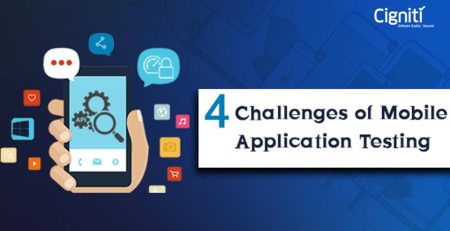How to Strategically Implement a Mobile Application Security Testing Tool?
|
Listen on the go!
|
When the last WannaCry Ransomware virus attacked global enterprises and institutional systems, it almost panicked every mobile application user. What if the virus hijacks the mobile software via some application?
Designing a mobile application with the required security protocols and ensuring that it continues to safeguard the sensitive customer information has never been trickier. It is a sheer necessity and not just a task that can be experimented for success or failure.
Security Testing and its Tools
A report by TechNavio’s analysts forecasts that the Global Security Testing market will grow at a CAGR of 13.46 percent, within the years 2014-2019. Mobile Application Security testing is getting critical and complicated each day, as the vulnerabilities are growing and applications are getting much more complex. It involves assessment of consumer-oriented software applications specifically via handheld devices such as tablets and smartphones. Security Testing is even relevant for lesser known commercial or custom software applications at an enterprise level.
It involves a range of testing segments such as vulnerability scanning, penetration testing, security auditing, security scanning, posture assessment, ethical hacking and risk assessment. Vulnerability scanning or assessment practically involves scanning software systems for detecting vulnerabilities, while Penetration Testing conducts specific system analysis for checking vulnerability of an attempt to hack the software.
Conceptually and practically, Security testing is a business-critical process and needs robust tools to make it more powerful and fool-proof. While it’s true, it is even more important that the tools are used strategically and as per the needs of the project. Any tool is futile unless it is effectively and rationally implemented to derive tangible outcome. There are heavy investments involved, where RoI can be pulled out only when the tools are implemented with a strategy and with best practices.
Consider mobile-specific tools
With the speed and precision required in mobile testing, it is recommended to use tools that are specifically made to test mobile applications. The tools market is full of such tools, which you must consider as per your project’s requirements. For instance, Appium is a popular tool used for app testing, including other tools such as Robotium used for Android apps and Google’s EarlGrey used for iOS apps. This will help you to get focussed results without any other fluff.
Good look of the Application’s ecosystem
Knowing the environment where the application is expected to operate is absolutely critical and your choice of a security testing tool totally depends on that. Ideally, it should be your first stage before selecting a tool, to gather full information about the ecosystem. This will help you understand the odds, threats, and the risks. For instance, both iOS and Android apps have their own set of risks to deal with.
Create a checklist
Noting down the probable risks and vulnerabilities will help you shortlist the security testing tool for the application. In this way, you can prioritize the vulnerabilities and choose the right tool to perform the job. For instance, if you have to check the security walls of the application under tremendous stress/load, you must use a tool that helps you do that. Some of the key items under application security are strong authentication, data leaks, activity tracking, validation of inputs, and encryption of communication.
Conceptualize the attack
Why is it so important to creatively conceptualize the attack? Along with functionality and accessibility, the application must be checked for security via varying levels of attacks. There are security testing tools that enable you to attack your own applications externally. This helps you to get that added perspective. Automation testing is a great way to plan these attacks, where the action is done repeatedly to derive the inferences. It further helps in speeding up the tests and enables you to reach faster to the market. Moreover, you can save configurations prior to running tests and even reuse later in similar testing scenarios.
Sync in with the web app
The current business scenario is all about offering an Omni-Channel experience to the customers. With continuous Testing, Delivery, and Deployment, applications are getting directly released to the customers. In such an environment, the app platforms such as Android and iOS don the role of gatekeepers. The application is expected to stay secure and intact across any platform or device dimension. A fall out at any level can cause total disruption, as everything is digitally connected.
Load Testing is crucial
Early and frequent testing is the rule of the hour to help track bugs and kill them before they eat up your application. However, in a load testing scenario it is recommended to perform the tests at a later stage by using cloud-based emulators to mock user behaviour during spikes in traffic. It is also recommended to test the apps on real devices to get near-to-real results. It will help reveal security risks such as data leaks, memory leaks, or a serious hack. For instance, Android’s Monkey tool generates random actions to check performance of the application during critically challenging situations. Practically, it helps to detect if the application doesn’t breakdown or emit any security concerns during traffic spikes. Again it depends on what’s your purpose of testing the app. If it’s a financial application, load testing is exceptionally critical.
In Conclusion
Security Testing is being redefined each day with the kind of challenges application makers and enterprises face in the digital environment. There is no set rule to test a mobile application or a specific tool, or a specific methodology. While automated testing might work for some, only Manual Testing might work for the others. The ground rule is to understand the underlying purpose that will help you get tangible results by using the security testing tools.
Cigniti’s Security TCoE consists of dedicated teams of security testing specialists with deep expertise spanning multiple domains/industries, cutting-edge technological resources/tools.
Check out how we deliver world class security testing services for our clients to help them stay compliant with the rigors of compliance driven businesses.





Leave a Reply